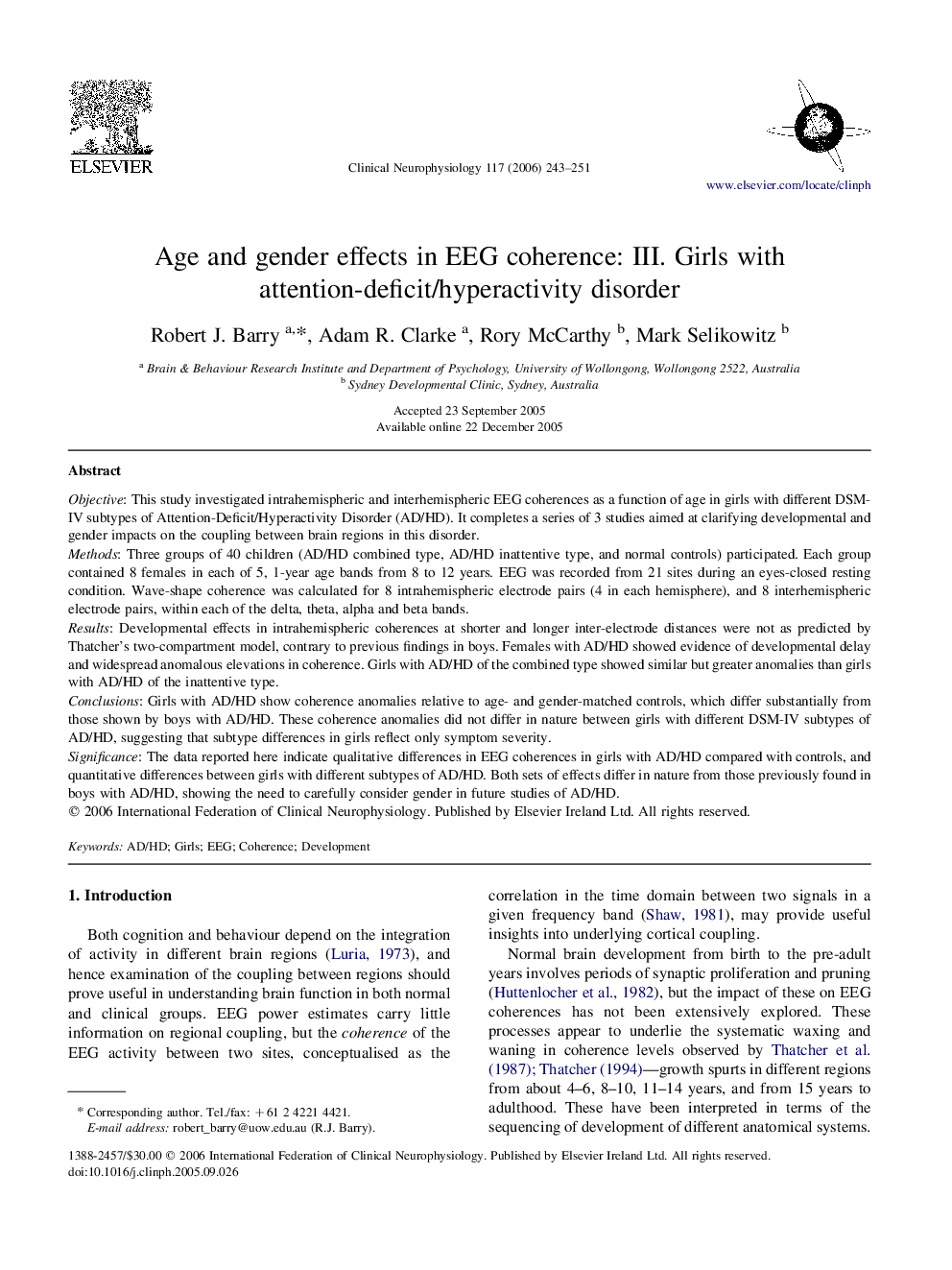| Article ID | Journal | Published Year | Pages | File Type |
|---|---|---|---|---|
| 3048130 | Clinical Neurophysiology | 2006 | 9 Pages |
ObjectiveThis study investigated intrahemispheric and interhemispheric EEG coherences as a function of age in girls with different DSM-IV subtypes of Attention-Deficit/Hyperactivity Disorder (AD/HD). It completes a series of 3 studies aimed at clarifying developmental and gender impacts on the coupling between brain regions in this disorder.MethodsThree groups of 40 children (AD/HD combined type, AD/HD inattentive type, and normal controls) participated. Each group contained 8 females in each of 5, 1-year age bands from 8 to 12 years. EEG was recorded from 21 sites during an eyes-closed resting condition. Wave-shape coherence was calculated for 8 intrahemispheric electrode pairs (4 in each hemisphere), and 8 interhemispheric electrode pairs, within each of the delta, theta, alpha and beta bands.ResultsDevelopmental effects in intrahemispheric coherences at shorter and longer inter-electrode distances were not as predicted by Thatcher's two-compartment model, contrary to previous findings in boys. Females with AD/HD showed evidence of developmental delay and widespread anomalous elevations in coherence. Girls with AD/HD of the combined type showed similar but greater anomalies than girls with AD/HD of the inattentive type.ConclusionsGirls with AD/HD show coherence anomalies relative to age- and gender-matched controls, which differ substantially from those shown by boys with AD/HD. These coherence anomalies did not differ in nature between girls with different DSM-IV subtypes of AD/HD, suggesting that subtype differences in girls reflect only symptom severity.SignificanceThe data reported here indicate qualitative differences in EEG coherences in girls with AD/HD compared with controls, and quantitative differences between girls with different subtypes of AD/HD. Both sets of effects differ in nature from those previously found in boys with AD/HD, showing the need to carefully consider gender in future studies of AD/HD.
